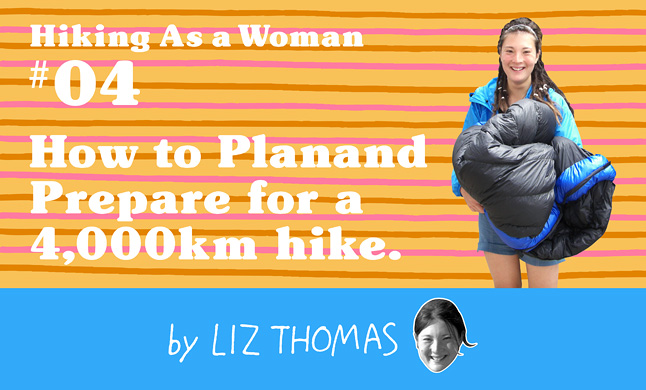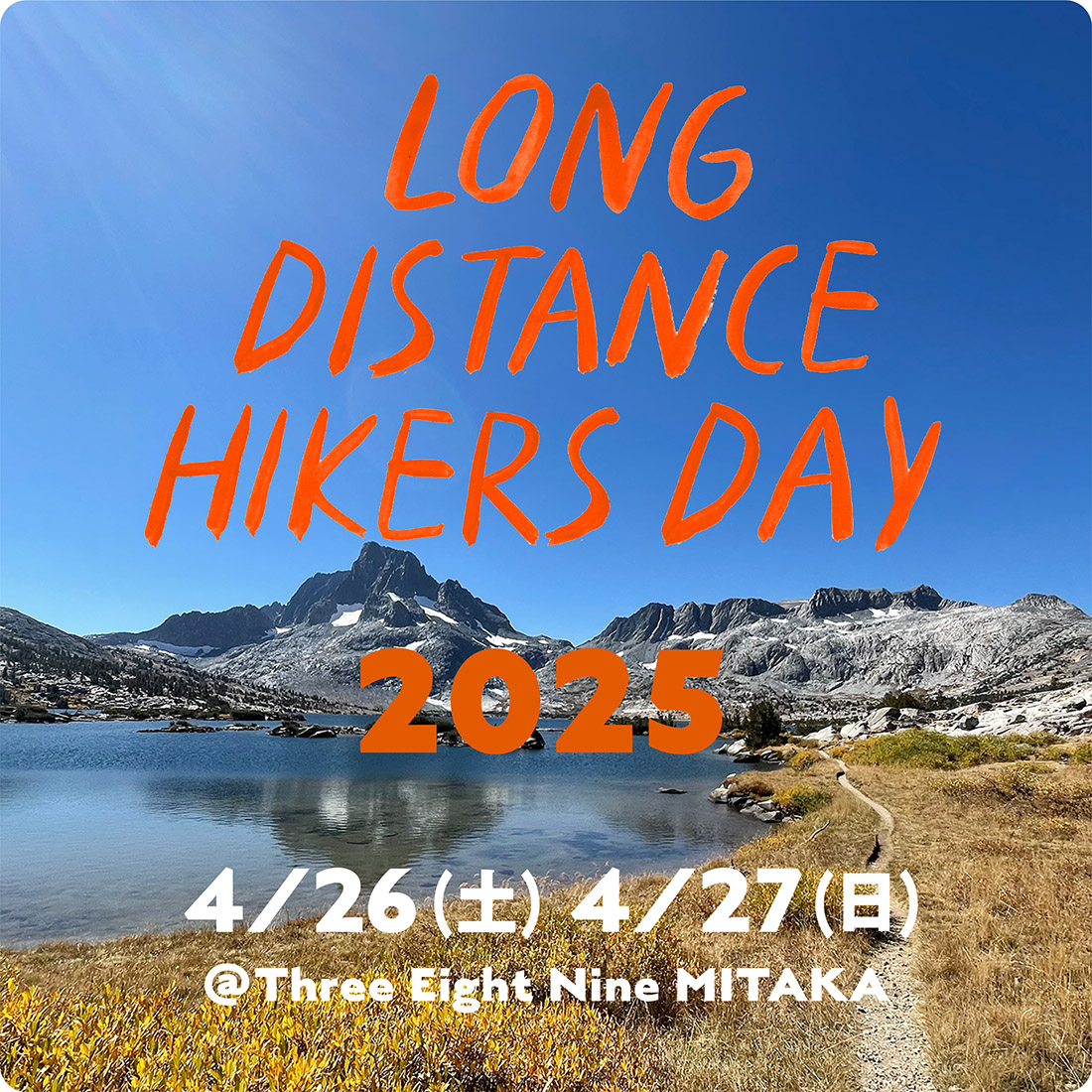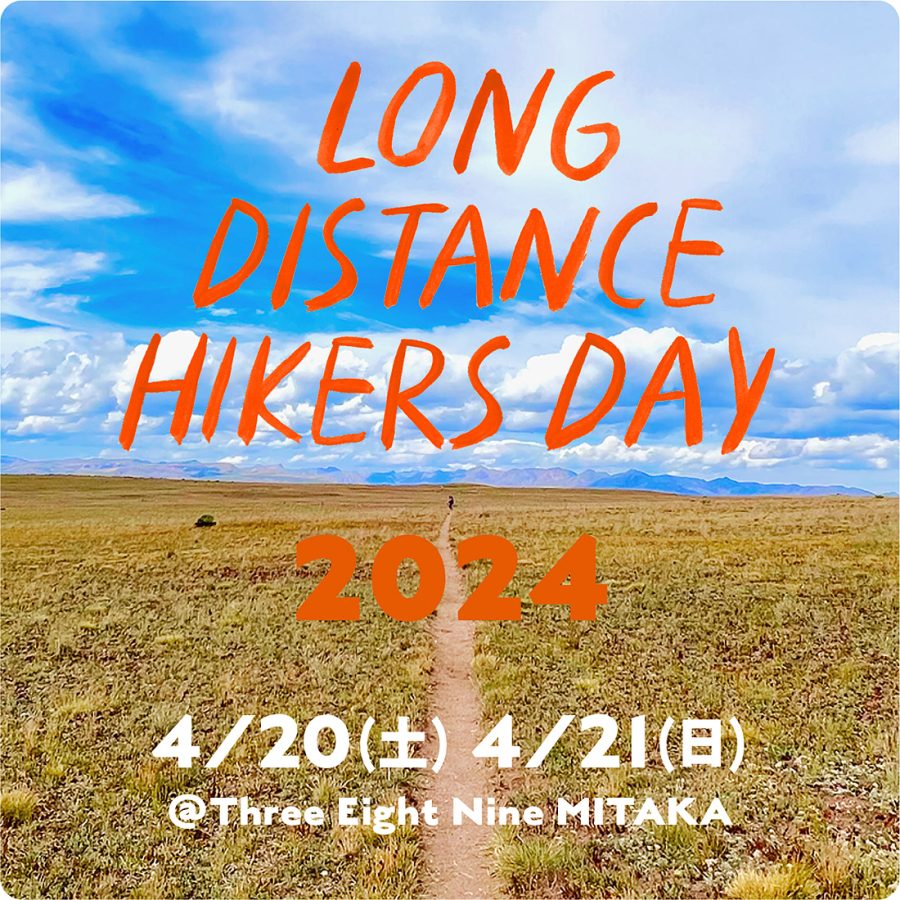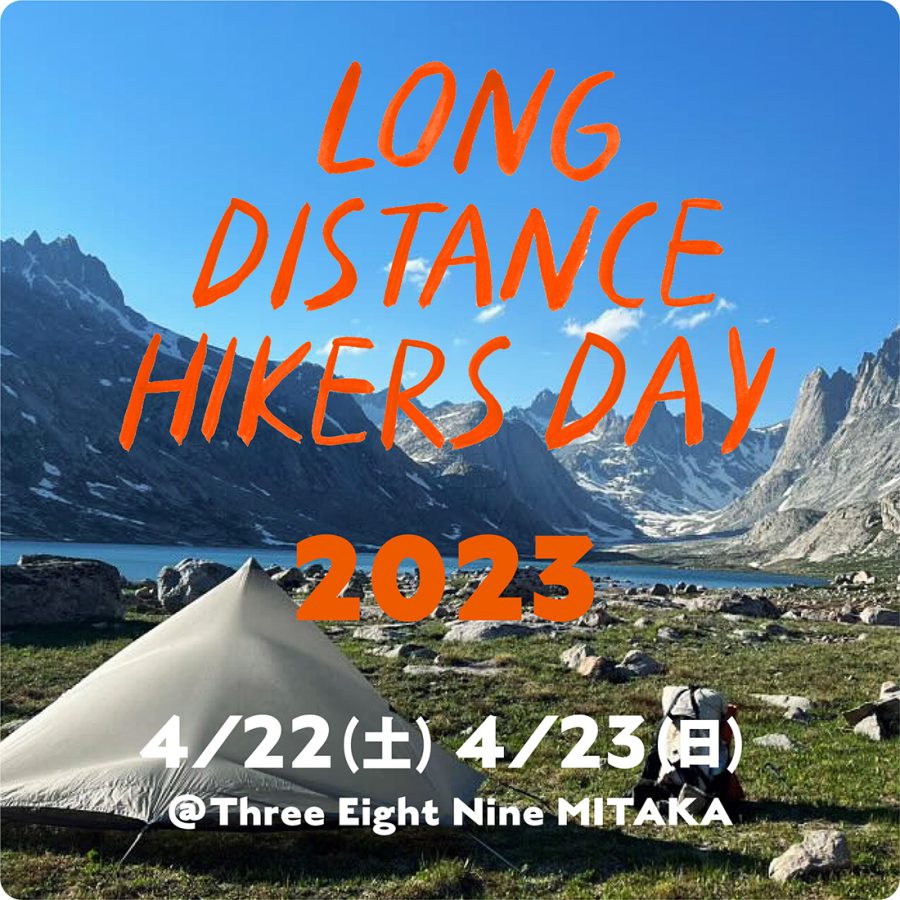リズ・トーマスのハイキング・アズ・ア・ウーマン#04 / 4,000kmのハイキングにおける計画と準備

How to Plan and Prepare for a 4,000 km hike
When I talk to first time hikers who decide that they want to hike a long trail, they are usually very excited, until they finally realize that planning for a hike is going to be a LOT of work. When you’re first getting into long distance backpacking, there are things about your trip that you don’t know – and then there are things about your trip that you don’t know that you don’t know! You may not know the right questions to ask. This article should be a useful guide to decide how to start when embarking on a long backpacking trip.
■Mental planning
Months or even years before you start a backpacking trip, it is useful to sit down and think about why you want to hike. Those who know why they are on the trail will be much happier and be able to cope with challenges on trail better. Hikers who are hiking their own adventures instead of trying to live up to someone else’s expectations will be in a better mental spot when things on trail get tough.
Before setting out on trail, hikers should realize that whatever plans are made ahead of time will likely change. A long distance hike is all about flexibility. You can’t plan for everything. Weather, injuries, getting lost, gear failure—these can ultimately mess up your schedule and plans. So know that despite how carefully you may plan your trip before you leave home, that your plans will likely change.
Hiking also requires creativity—being able to come up with creative solutions when a problem occurs. For example, imagine that your pack got a rip in it. You can’t immediately return it to the store. What can you do? A creative hiker may try to sew it up with dental floss or use duct tape to cover the hole until it can be returned. Before your hike, think about things that could go wrong and write down ways that you can “solve” the problem. This will prepare you mentally for worst case scenarios. Taking a class or reading a book on backcountry skills can help make this process easier.
Hiking most importantly asks hikers to know themselves and their bodies. Hikers who enjoy the trail the most are those who know the difference between when to push through a challenge and when to realize a challenge is too hard to continue. Hikers who can push through the pain from a blister or hunger or a big hill are working on the edge of their capability and are often very pleased that they were able to accomplish their goal despite adversity. Yet it is also useful to know when to stop because to continue on would be dangerous. Hiking is a balance between persevering and not getting oneself hurt.
■Do a Test Hike
The best way to prepare for a backpacking trip is to go into your planning process with some knowledge about yourself and your hiking capabilities. This will give you a baseline knowledge of your physical ability and skills and give you an idea of how much you will need to learn before you head out or how much you will need to train physically.
A few months before your big trip, do a test hike with all your backpacking gear. Choose some place that is familiar to you and safe and be sure to hike with at least one other person to help just in case something were to happen.
One of the most important parts of preparing to go on a long hike is to know how to use your gear. Practice setting up your tent at home or in a park. Then practice setting it up somewhere in the woods while you are on a dayhike. Lastly, take it on a short camping trip—preferably sometime when it is raining—just to make sure that you have mastered the how to set up a tent. A great place to practice setting up your tent is in a campground that has a lodge. If your tent were to leak, you can always go over to the lodge and stay dry. Note that different tents have different designs, so just because you know how to set up one tent doesn’t mean that it will work the same way as another tent.
A test hike also allows you to figure out how many miles per day you can hike. This will help you with the next section of your planning.
■Logistical planning
When I start planning for a trip that is 4,000 km long, the idea can initially be daunting. First, I like to get together all the maps and guidebooks I can. I also like to find water reports, climate information (highs and lows), resupply points, conditions (trail, snowpack, river levels), nearby trailheads, intersections, landmarks, and permit information. It is also useful to read other hikers’ blogs about their adventures.
After getting together all that information, it is easiest to break the planning into chunks. Instead of planning the whole trip, I start by planning the first section, usually around 100 km. The first section of the hike is the distance between my starting point and the first place where I intend to resupply.
Then, I decide how many days it will take me to hike the first section. In some places, you are required to camp in established campsites or campgrounds. This will be a natural limitation that will determine where you will camp each day. Parks that require permits will also designate where you can camp each day. Otherwise, I base where I am going to camp on how far I can hike each day. How I decide how far I can hike each day is:
1) By taking a day hike with all my gear and discovering how far I can hike in one day
2) By determining my hiking pace and fitness level
3) By using maps and research to determine how difficult the terrain may be
4) By researching and reading others’ stories of the climate and weather where I am hiking (if it is rainy or if there is a lot of snow on the ground, I may not be able to hike as far or as fast)
5) By guessing how heavy my pack will be on the trip (if I am carrying a lot of extra gear or food, I cannot cover as many miles)
6) By figuring out what my goals on the hike (if my goal is to set a speed record, I try to cover many miles per day. If my goal is to take lots of photos and go fishing, I will not hike many miles per day)
7) By considering who I am hiking with (if I am hiking with someone very slow, I know that our group pace will go down quite a bit, so I plan accordingly)
8) By knowing what days I need to start and finish my hike
I also decide where I will camp based on the water availability. If water sources are far apart, I will often camp near the water source so that I can use the water at night and in the morning. Some trails have water reports that include crowd-sourced information about whether streams or springs are flowing. I like to make sure that whatever route I am taking or whatever pace I am going, I will have enough water available to feel comfortable. Because I tend to hike about 40 km per day, I feel comfortable if my water sources are 40 km apart so that I know I will see water at least once a day. Many other hikers may feel more comfortable seeing water much more frequently. Judge where you are camping and which routes you will take based on what makes you feel comfortable.
I also prefer to plan where my campsites are so that I will sleep below treeline. That way, I can get protection from wind and weather and avoid setting up my tent on rocky terrain or ridges which may be hard to sleep on. For safety, I tend to camp at least 4 km from roads to avoid strange people from coming upon my camp at night.
Using all this information, I plot out on a map and/or in a guidebook where I intend to camp for every night of the first section. Then, I use the same criteria to repeat this process for the full 4,000 km, mapping it out about 100 km at a time, based on where my resupply points are.
Lastly, I put this information in a spreadsheet. I also plan days into my trip to take breaks, resupply with food, meet with family or friends, or take side trips. This gives me a preliminary idea of how long I think my trip will take and where I will be on any given day of the trip.
■Planning food and resupply
Once I have broken my long trip down into an approximation of where I will camp every night, I will also have an idea of where I can get food and other resupplies. I also will know how many days and nights I will hike between resupplies.
I then use maps, the Internet, and my phone to figure out whether the places I resupply will have grocery stores or gear stores. If not, I have to send myself food and supplies. Sometimes, I will send myself a package in a trail town. In the US, it is easy to send yourself a package to a Post Office. You can also send yourself packages to hostels or hotels. Some gear stores and restaurants will accept packages from hikers. In some especially remote places like Alaska, there are no stores or hotels to hold your resupply packages, but you can charter a bush plane to drop off a resupply package in a pre-decided location. Always call ahead to verify that a business is willing to hold a package for you. Some businesses—especially those that require chartering an airplane—will require that you pay a fee!
In each package, I pack myself around 1-1.5 kg of food per day that I will be on trail. Sometimes, I also mail myself extra First Aid supplies, sunscreen, hand sanitizer, socks, and soap. On a long trip, it is not uncommon for me to send myself an extra jacket before I enter an area that is known to be cold. I will also send myself bear protection before I enter an area with lots of bear activity, or snow gear if I am about to head into an area with lots of snow.
Before I leave to go hiking, I label each box with the mailing address and write “Please hold for hiker. Estimated Date of Arrival _____.” For especially long trips, I ask a friend or family to send packages about 2 weeks before my estimated date of arrival for each package.
■Planning for Safety
Before heading on a trip, I like to read books or take classes on backcountry safety. This helps prepare me for worst case scenarios if something bad were to happen to me in the woods. Useful classes before heading on a backpacking trip include: First Aid, Navigation, Backcountry Skills, and Snow Skills.
I also always share my itinerary and schedule with my friends and family members. When I am on a long trip, I try to call my friends or family often to let them know that I made my checkpoint and that I am OK. If I were to not make a checkpoint, they would know to call the authorities to get help for me.
■Physical training
I could write a whole essay on preparing yourself physically for long hike, but put simply, the best training for backpacking is to go hiking. Even short hikes help strengthen the muscles in your feet and ankles, which can be physical weak points on a backpacking trip. Backpacking is not just a lower body activity. In addition to leg exercises, also do some back and core exercises.
Although walking on paved streets is somewhat helpful, by practicing on trails, you force your mind to figure out how to step around rocks and roots and make the best foot placement as you are walking. Many people who are just getting into hiking ask me “how do you know where to put your feet?” At first, making many small decisions of where to place your feet can be mentally exhausting, but after a while, you will be able to do it effortlessly without thinking. As you practice foot placement more, your hiking speed will become faster.
Start your training by hiking a short distance, and slowly add distance and elevation gain. I also like to do some physical training while it is raining or snowing so that I can practice what to do when I encounter those conditions when I am hiking.
■Conclusion
Preparing and planning before your backpacking trip will improve your outdoor experience. You will be safer, more comfortable, and happier during your trip. You will be perform better, and feel stronger and more capable. The best part about planning and preparing for a backpacking trip is that it is fun and helps make you even more excited about your upcoming trip.
- « 前へ
- 2 / 2
- 次へ »
TAGS:














 ULギアを自作するための生地、プラパーツ、ジッパー…
ULギアを自作するための生地、プラパーツ、ジッパー…  ZimmerBuilt | TailWater P…
ZimmerBuilt | TailWater P…  ZimmerBuilt | PocketWater…
ZimmerBuilt | PocketWater…  ZimmerBuilt | DeadDrift P…
ZimmerBuilt | DeadDrift P…  ZimmerBuilt | Arrowood Ch…
ZimmerBuilt | Arrowood Ch…  ZimmerBuilt | SplitShot C…
ZimmerBuilt | SplitShot C…  ZimmerBuilt | Darter Pack…
ZimmerBuilt | Darter Pack…  ZimmerBuilt | QuickDraw (…
ZimmerBuilt | QuickDraw (…  ZimmerBuilt | Micro Pack …
ZimmerBuilt | Micro Pack … 














